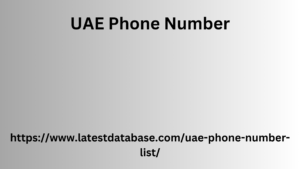Post by account_disabled on Mar 11, 2024 0:57:34 GMT -5
Data mining (which can be translated as data extraction in Italian) indicates all the data available . In the case of e-Commerce, data mining can be used for example to discover if and what correlation there is between the different products that your customers purchase. What is the purpose of data mining? With data mining you begin research without formulating a problem in advance. You don't know what you'll find or if you'll find anything. Data mining is different from an analysis: normally with analyzes you want to know, for example.
Why there are fewer visitors on an online shop on Saturdays than on Fridays, or rather UAE Phone Number you are carrying out a search linked to a very specific problem. In contrast, data mining is about finding answers to questions you didn't know you had . The purpose of data mining is therefore not to answer a question, but to find patterns in the available data. Data mining example: beers and diapers The book Creating Value With Big Data Analytics (by Verhoef, Kooge and Walk) illustrates an example from the British supermarket chain Tesco. The chain looked at purchases made with the Tesco Club Card and found that if a customer bought nappies, they often also had beer in their basket.

This example highlights the meaning of data mining: there are patterns that are not always obvious . After finding this pattern, the chain supermarkets rearranged the products by placing the beers next to the diapers. The result: increased sales . Optimize your online store. Increase your conversions. Book a free analysis. How is data mining done? If you want to start finding useful information for your e-Commerce through data mining, you probably want to know how to do it efficiently. Data mining takes time, especially when done without automatic methods.
Why there are fewer visitors on an online shop on Saturdays than on Fridays, or rather UAE Phone Number you are carrying out a search linked to a very specific problem. In contrast, data mining is about finding answers to questions you didn't know you had . The purpose of data mining is therefore not to answer a question, but to find patterns in the available data. Data mining example: beers and diapers The book Creating Value With Big Data Analytics (by Verhoef, Kooge and Walk) illustrates an example from the British supermarket chain Tesco. The chain looked at purchases made with the Tesco Club Card and found that if a customer bought nappies, they often also had beer in their basket.

This example highlights the meaning of data mining: there are patterns that are not always obvious . After finding this pattern, the chain supermarkets rearranged the products by placing the beers next to the diapers. The result: increased sales . Optimize your online store. Increase your conversions. Book a free analysis. How is data mining done? If you want to start finding useful information for your e-Commerce through data mining, you probably want to know how to do it efficiently. Data mining takes time, especially when done without automatic methods.
